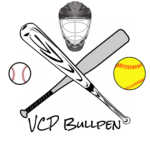Tim Anderson pulled an extra-large glove off the top shelf of his locker in the Angels clubhouse, slipped it on his left hand and began pounding his right fist into the massive pocket.
“It feels weird,” he admitted.
Anderson has started 946 regular-season games in the major leagues, all but two at shortstop. But six seasons after leading the American League in hitting and three seasons after his last all-star appearance, Anderson, 31, is fighting this spring to make the Angels roster.
To increase those odds, he’s learning to play the outfield. That explains the oversized glove, which for Anderson felt like a jai alai cesta compared with the modest mitts infielders use.
Read more: Why Angels manager Ron Washington thinks ‘things can go way better than you think’
“EY put that in my locker so I’m going to mess with it a bit,” Anderson said, referencing Angels coach Eric Young Sr., who played the infield and outfield during his all-star career.
“Why limit yourself? Being able to play multiple positions, it’s pretty cool.”
It’s also becoming pretty necessary. With many teams now carrying 12 or 13 pitchers, two catchers and a designated hitter on their 26-man rosters, you don’t have to be a math wizard to know that versatility is now a must for bench players.
“Say your first baseman gets a base hit in a tie game leading off the ninth inning,” said Perry Hill, who coached Seattle’s Dylan Moore to a Gold Glove as a utility player last season. “Well, the guy that goes in to pinch run for him, he needs to know how to play first base so the manager doesn’t have to use a pinch runner and another player.
“It just gives the manager some versatility. He’s got some freedom to manage.”
In recognition of the importance of that versatility, Major League Baseball began awarding Gold Gloves for utility players three years ago. But that trophy should probably feature multiple gloves because playing multiple positions means lugging around extra mitts.
First basemen need to scoop balls out of the dirt so their mitts are large and rounded, more like baskets than gloves. Middle infielders, who must dig the ball out of their gloves quickly on double plays, typically use smaller mitts with shallow pockets while third basemen use larger, meatier gloves to deal with hot shots at the hot corner.
Read more: Jack…

